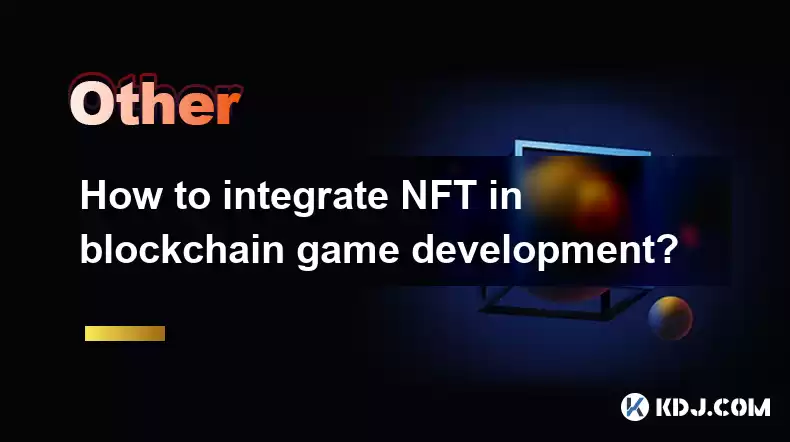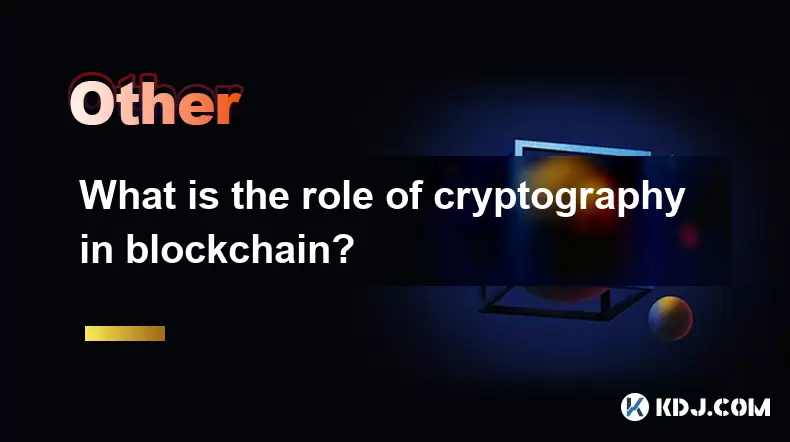-
 Bitcoin
Bitcoin $113900
0.47% -
 Ethereum
Ethereum $3491
-0.42% -
 XRP
XRP $2.876
-1.87% -
 Tether USDt
Tether USDt $1.000
0.03% -
 BNB
BNB $750.4
-0.49% -
 Solana
Solana $161.3
-1.76% -
 USDC
USDC $0.9999
0.01% -
 TRON
TRON $0.3242
-0.91% -
 Dogecoin
Dogecoin $0.1985
-0.19% -
 Cardano
Cardano $0.7241
1.49% -
 Hyperliquid
Hyperliquid $38.05
0.56% -
 Stellar
Stellar $0.3896
2.92% -
 Sui
Sui $3.442
0.61% -
 Chainlink
Chainlink $16.18
0.92% -
 Bitcoin Cash
Bitcoin Cash $541.0
0.51% -
 Hedera
Hedera $0.2427
2.67% -
 Ethena USDe
Ethena USDe $1.001
0.03% -
 Avalanche
Avalanche $21.39
-0.68% -
 Toncoin
Toncoin $3.669
2.25% -
 Litecoin
Litecoin $109.5
0.95% -
 UNUS SED LEO
UNUS SED LEO $8.966
0.11% -
 Shiba Inu
Shiba Inu $0.00001218
0.77% -
 Polkadot
Polkadot $3.598
1.23% -
 Uniswap
Uniswap $9.164
1.14% -
 Monero
Monero $297.7
1.21% -
 Dai
Dai $1.000
0.00% -
 Bitget Token
Bitget Token $4.328
0.84% -
 Pepe
Pepe $0.00001047
1.05% -
 Cronos
Cronos $0.1329
0.70% -
 Aave
Aave $257.6
1.03%
How to integrate NFT in blockchain game development?
Integrating NFTs into blockchain games enhances player experience by enabling ownership and trading of unique digital assets, requiring careful platform choice and smart contract implementation.
Apr 13, 2025 at 10:07 pm

Integrating Non-Fungible Tokens (NFTs) into blockchain game development can significantly enhance the gaming experience by adding unique digital assets that players can own, trade, and monetize. This process involves several key steps and considerations, from understanding the basics of NFTs to implementing them effectively within your game's ecosystem.
Understanding NFTs and Their Role in Gaming
NFTs are unique digital assets that can represent ownership of a specific item or piece of content on the blockchain. In the context of gaming, NFTs can be used to represent in-game items such as characters, weapons, skins, or virtual land. These assets are indivisible and unique, meaning each NFT has its own distinct characteristics and value. By integrating NFTs, developers can create a more engaging and economically dynamic gaming environment where players have true ownership over their digital assets.
Choosing the Right Blockchain Platform
The first step in integrating NFTs into your game is selecting the appropriate blockchain platform. Ethereum is a popular choice due to its robust support for NFTs through standards like ERC-721 and ERC-1155. However, other platforms like Binance Smart Chain, Flow, and Polygon also offer viable alternatives with varying transaction fees and scalability options. When choosing a platform, consider factors such as the cost of transactions, the speed of processing, and the existing community and ecosystem around the blockchain.
Designing Your NFT Ecosystem
Once you have selected a blockchain platform, the next step is to design your NFT ecosystem. This involves determining what types of assets will be tokenized and how they will interact within the game. Consider creating a variety of NFTs, such as rare items, limited editions, or assets with unique attributes. You should also decide on the mechanics of how players can earn, trade, or purchase these NFTs. For example, players might earn NFTs through gameplay achievements or purchase them from an in-game marketplace.
Implementing Smart Contracts
Smart contracts are essential for managing the creation, ownership, and transfer of NFTs within your game. You will need to develop smart contracts that adhere to the chosen NFT standard (e.g., ERC-721 or ERC-1155). These contracts will handle the minting of new NFTs, tracking ownership, and facilitating transfers between players. It's crucial to ensure that your smart contracts are secure and thoroughly tested to prevent vulnerabilities that could compromise the integrity of your game's economy.
- Create the smart contract code using a programming language like Solidity for Ethereum-based NFTs.
- Deploy the smart contract to the chosen blockchain network.
- Test the smart contract thoroughly to ensure it functions as intended and is free from bugs or security issues.
- Integrate the smart contract with your game's backend to enable seamless interaction between the game and the blockchain.
Building the In-Game Marketplace
An in-game marketplace is a crucial component for facilitating the trading of NFTs among players. Develop a user-friendly interface that allows players to list, browse, and purchase NFTs. The marketplace should be integrated with your smart contracts to automatically handle the transfer of ownership and payment processing. Consider implementing features such as auctions, buy-now options, and a fee structure to incentivize trading and maintain a healthy economy within your game.
Ensuring Player Experience and Engagement
Integrating NFTs into your game should enhance the player experience, not detract from it. Focus on creating a seamless and intuitive user interface that makes interacting with NFTs straightforward and enjoyable. Provide clear instructions and tutorials to help players understand how to earn, trade, and utilize their NFTs. Additionally, consider implementing features that reward players for participating in the NFT ecosystem, such as special events, challenges, or bonuses for trading activity.
Compliance and Legal Considerations
When integrating NFTs into your game, it's important to consider the legal and regulatory implications. Ensure that your game complies with relevant laws and regulations regarding digital assets and online transactions. This may involve obtaining necessary licenses, implementing anti-money laundering (AML) and know-your-customer (KYC) procedures, and clearly outlining the terms of service for your NFT ecosystem. Consulting with legal experts can help you navigate these complexities and ensure that your game operates within the bounds of the law.
FAQs
Q: Can NFTs in games be used across different platforms?
A: While it's technically possible to create NFTs that are compatible with multiple blockchain platforms, it requires careful design and implementation. Most NFTs are tied to a specific blockchain, but standards like ERC-721 and ERC-1155 on Ethereum are widely adopted, making it easier to integrate them into various games and platforms that support these standards.
Q: How can I ensure the security of NFTs in my game?
A: Security is paramount when dealing with NFTs. To ensure the security of NFTs in your game, implement robust smart contract security measures, regularly audit your code for vulnerabilities, and educate players about best practices for securing their digital wallets. Additionally, consider using multi-signature wallets for high-value transactions and implement strong authentication mechanisms.
Q: What are the potential challenges of integrating NFTs into a game?
A: Integrating NFTs into a game can present several challenges, including technical complexities, high transaction fees, scalability issues, and regulatory compliance. Developers must also manage the balance between creating a vibrant economy and preventing inflation or market manipulation. Addressing these challenges requires careful planning and ongoing management.
Q: How can I market my NFT-based game to attract players?
A: Marketing an NFT-based game involves highlighting the unique benefits of owning and trading digital assets. Utilize social media, influencer partnerships, and community engagement to build hype around your game. Offering limited-edition NFTs, hosting events, and providing incentives for early adopters can also help attract players and build a loyal community.
Disclaimer:info@kdj.com
The information provided is not trading advice. kdj.com does not assume any responsibility for any investments made based on the information provided in this article. Cryptocurrencies are highly volatile and it is highly recommended that you invest with caution after thorough research!
If you believe that the content used on this website infringes your copyright, please contact us immediately (info@kdj.com) and we will delete it promptly.
- Altcoins Most Searched: Hedera (HBAR) and the ETF Hype
- 2025-08-03 20:50:16
- Arbitrage Adventures: Creditcoin, Kaspa, and Chasing Crypto Profits
- 2025-08-03 20:30:16
- Claude HIVE & Code Agents: Faster Coding Revolution?
- 2025-08-03 20:50:16
- Trump Media, Bitcoin, and Crypto: A Surprising Alliance in the Making?
- 2025-08-03 21:30:16
- Shiba Inu's Bullish Reversal Hopes Amid Market Uncertainty: A Deep Dive
- 2025-08-03 21:30:16
- Shiba Inu's Struggle, Mutuum Finance's Rise, and Key Support Levels: A Crypto Deep Dive
- 2025-08-03 20:55:16
Related knowledge

What is the difference between on-chain and off-chain transactions?
Aug 02,2025 at 04:22pm
Understanding On-Chain TransactionsOn-chain transactions refer to digital asset transfers that are recorded directly on a blockchain ledger. These tra...

What is a node's role in a blockchain network?
Aug 03,2025 at 03:16pm
Understanding the Function of a Node in a Blockchain NetworkA node is a fundamental component of any blockchain network, acting as a participant that ...

What is the double-spending problem and how does blockchain prevent it?
Aug 02,2025 at 01:07pm
Understanding the Double-Spending ProblemThe double-spending problem is a fundamental challenge in digital currency systems where the same digital tok...

What is the difference between a blockchain and a database?
Aug 01,2025 at 09:36pm
Understanding the Core Structure of a BlockchainA blockchain is a decentralized digital ledger that records data in a series of immutable blocks linke...

How does blockchain handle scalability?
Aug 02,2025 at 02:58pm
Understanding Blockchain Scalability ChallengesBlockchain scalability refers to a network's ability to handle an increasing volume of transactions wit...

What is the role of cryptography in blockchain?
Aug 03,2025 at 03:42pm
Understanding the Foundation of Blockchain SecurityCryptography is the cornerstone of blockchain technology, providing the essential tools to ensure d...

What is the difference between on-chain and off-chain transactions?
Aug 02,2025 at 04:22pm
Understanding On-Chain TransactionsOn-chain transactions refer to digital asset transfers that are recorded directly on a blockchain ledger. These tra...

What is a node's role in a blockchain network?
Aug 03,2025 at 03:16pm
Understanding the Function of a Node in a Blockchain NetworkA node is a fundamental component of any blockchain network, acting as a participant that ...

What is the double-spending problem and how does blockchain prevent it?
Aug 02,2025 at 01:07pm
Understanding the Double-Spending ProblemThe double-spending problem is a fundamental challenge in digital currency systems where the same digital tok...

What is the difference between a blockchain and a database?
Aug 01,2025 at 09:36pm
Understanding the Core Structure of a BlockchainA blockchain is a decentralized digital ledger that records data in a series of immutable blocks linke...

How does blockchain handle scalability?
Aug 02,2025 at 02:58pm
Understanding Blockchain Scalability ChallengesBlockchain scalability refers to a network's ability to handle an increasing volume of transactions wit...

What is the role of cryptography in blockchain?
Aug 03,2025 at 03:42pm
Understanding the Foundation of Blockchain SecurityCryptography is the cornerstone of blockchain technology, providing the essential tools to ensure d...
See all articles

























































































